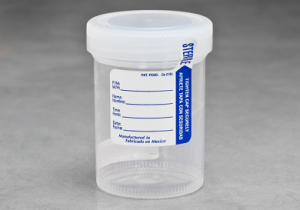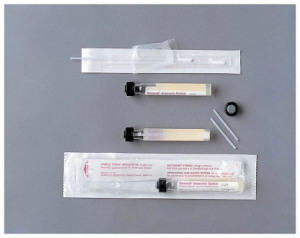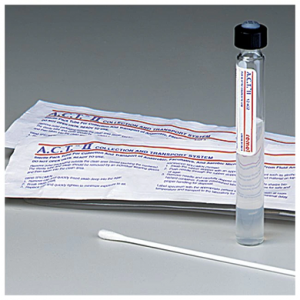Body Fluid Culture – Bacteriologic Exam
POWERCHART ORDER -Body Fluid Culture, Fluid Culture- Body
Useful For
- NOTE: ALL STERILE BODY FLUID CULTURES INCLUDE AN ANAEROBIC CULTURE AS PART OF THEIR WORKUP.
- The sterile body fluids include pleural, pericardial, amniotic, peritoneal and synovial fluids. The total number of these specimens received in any clinical microbiology lab is relatively small, but their value in establishing a diagnosis should not be underestimated. It has been found that properly collected and cultured aspirates may be the only source of clinically significant isolates.
- In general, the predominating organisms, isolated from body fluids, reflect the normal flora of the adjacent areas. Thus, gram positive organisms tend to predominate in most body fluids because of the endogenous gram-positive skin flora. Recovery of different species may be influenced by the method of specimen collection, and contamination may be introduced by improper site preparation or by lack of aseptic technique.
- Although the classic signs of inflammation – pain, redness, heat, and swelling – are reasons for ordering microbiologic tests on aspirates of fluids, the excess accumulation of fluid is the main reason for culturing body fluid aspirates. If an organism can be recovered from a normally sterile site, it may confirm the diagnosis of an infectious process and aid in the proper selection of antimicrobials.
Method Name
Culture
Aliases
Fluid Culture; Sterile Body Fluid Culture,Body Fluid Culture,C Fluid,
Specimen Type
- Specimen types:
- Pleural fluid:
- Serous, fibrinous and serofibrinous exudates: Serous and serofibrinous exudates are usually described as being relatively clear, straw colored fluids. In most infections the fluid exudate produced is small and is resolved with the resolution of the infection. However, the amount of fluid in some infections can be quite large, with accumulations of up to several liters. These large pleural effusions may interfere with pulmonary function and can cause acute respiratory distress. In addition, a pleural effusion provides a good environment for microbial survival and growth, which may further spread the infection to other areas of the pleura. Also, a pleural effusion favors survival of organisms seeding the pleural fluid from the blood or from a contaminated thoracentesis procedure. The cellular elements found in serous fluids may be lymphocytes, macrophages, and polymorphonuclear leukocytes (PMNL’s).
- Pericardial fluid:
- The visceral pericardium encloses the heart and the proximal few centimeters of the great vessels in a serous sac, which is the external surface of the heart itself. The parietal pericardium is closely clasped to the outside of the visceral pericardium and is the flask-shaped fibrous bag that encloses the heart. The pericardial sac usually contains 10-50 ml of fluid, which has a chemical composition similar to serum.
- Infective pericarditis is the presence of pus, microorganisms, or both in the pericardial sac or tissues. Pericarditis apparently can be a primary illness or appear in the course of almost any other syndrome. Any organism that can reach the pericardium can infect it. The pericardium is rarely a primary site of infection. The source may be a local or distant focus. Spread to the pericardium generally occurs via one of five pathways:
- Direct pulmonary extension
- Hematogenous spread
- Myocardial abscess/endocarditis
- Perforating injury to the chest wall
- Subdiaphragmatic suppurative lesion
- Pleural fluid:
- Peritoneal fluid (peritoneal dialysate):
- Interest in microbiological flora associated with peritonitis has been stimulated by the development of the continuous ambulatory peritoneal dialysis technique (CAPD). This procedure offers patients greater freedom and mobility because of the self-care advantages of changing dialysis fluid. However, one dreaded side effect is the development of peritonitis due to the introduction of microorganisms into the peritoneum through the CAPD system.
- Skin flora contamination often occurs when the dialysate is changed, and this may account for the high number (55-65%) of infections associated with gram positive cocci. Another 15-20% are caused by the enteric gram negative bacilli (ENTB) and approximately 1-6% are due to fungal organisms. Anaerobic bacteria can be associated with infections, but the number is exceedingly small.
- Synovial fluid (joint fluid):
- Synovial fluid is a transparent, alkaline, viscous fluid, resembling the white of an egg. It is secreted by the synovial membrane and is contained in the joint cavities, bursae, and tendon sheaths. Shoulder synovial fluids are held 10 days to rule out Propionibacterium acnes.
- Amniotic fluid:
- Amniotic fluid, pre-membrane rupture is normally sterile. However, upon extended labor (>6 hours) without rupture of the membranes, culture of the amniotic fluid is often positive. Upon rupture of the membranes, the fluid may become contaminated with vaginal flora. Premature rupture of the membranes can therefore lead to exposure of the fetus to possible bacterial pathogens.
- Amniotic fluid is not like many of the body fluids one typically considers. It is not normally present and is not a manifestation of a pathology. It is strictly sex related, and it is formed, accumulated, and discharged as part of a physiological process that is relatively short term.Synovitis is the inflammation of the synovial membrane. It is usually painful, particularly on motion, and is characterized by a fluctuating swelling, due to effusion within the synovial sac. Many of the
- organisms cultured from joint infections are fastidious, and special culture techniques are necessary for isolation.
- To rule out Gonococcal infection, isolation will be enhanced by direct inoculation of the specimen to GC isolation media. A smear should be prepared and a swab should also be collected, and placed in a culturette for transport, for the possible isolation of other organisms.
- Biliary fluid (bile): NOT A STERILE BODY FLUID ORDER Aspirate/Tissue culture
- Amniotic fluid:
- Synovial fluid is a transparent, alkaline, viscous fluid, resembling the white of an egg. It is secreted by the synovial membrane and is contained in the joint cavities, bursae, and tendon sheaths. Shoulder synovial fluids are held 10 days to rule out Propionibacterium acnes.
Specimen Required
- Fluid clean sterile leak proof container
- Starswab, ACT tube
- BacT/Alert SA and SN Blood Culture Bottles.
- Aspiration of sterile body fluids includes the following: Amniotic, Ascitic, Biliary, Joint/Synovial, Paracentesis, Pericardial, Peritoneal/PD, Pleural, Thoracentesis.
- If insufficient fluid is received for all tests ordered, the physician should be contacted to establish the test priority before any testing is done.
- Specimens in transit longer than 1 hour and not in a port-a-cul vial, STAR swab tube or ACT tube, are not acceptable for anaerobic culture
- STAR swab tube or ACT tube greater than 48 hours old are not acceptable for aerobic or anaerobic culture.





Specimen Minimum Volume
- 1 mL
- 5 ml preferred
- 5 ml per BacT/Alert SA, SN Blood Culture Bottles
Specimen Stability Information
- Transport at room temperature.
- Specimens must be received within 2 hours of collection unless received in Starswab, ACT or Culture bottles. These specimens are stable for 48 hours. The Starswab or ACT must remain clear below the surface.
- If insufficient fluid is received for all tests ordered, the physician should be contacted to establish the test priority before any testing is done.
- Specimens in transit longer than 1 hour and not in a port-a-cul vial, STAR swab tube or ACT tube, are not acceptable for anaerobic culture
- STAR swab tube or ACT tube greater than 48 hours old are not acceptable for aerobic or anaerobic culture.
Rejected Due To
- Specimen not transported at room temperature.
- Specimens not received within 2 hours of collection unless received in Starswab, ACT or Culture bottles. These specimens are stable for 48 hours. The Starswab or ACT must remain clear below the surface.
- If insufficient fluid is received for all tests ordered, the physician should be contacted to establish the test priority before any testing is done.
- Specimens in transit longer than 1 hour and not in a port-a-cul vial, STAR swab tube or ACT tube, are not acceptable for anaerobic culture
- STAR swab tube or ACT tube greater than 48 hours old are not acceptable for aerobic or anaerobic culture.
Special Instructions
- Specimens must be labeled with complete source and body site information.
- Exam includes direct smear (gram stain), anaerobic workup and susceptibility testing if applicable, for the isolate(s) recovered.
- All aspiration sites for the collection of culture material must be disinfected before the specimen is aspirated (see blood culture collection information).
- NOTE: specimens received in culture bottles are not suitable for direct smears.
- Specimen types not listed above should be ordered as an Aspirate/Tissue Culture
Performing Laboratory
Glens Falls Hospital Microbiology Laboratory
Reference Values
No Growth
Day(s) and Time(s) Performed
- Day Shift
- 7 days per week
- 24 hour monitoring if fluid is on blood culture instrument
Analytical Time
5 days
Specimen Retention Time
30 days
Analytical Time
5 days
